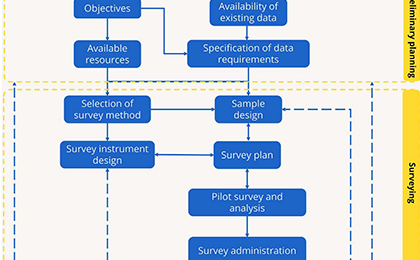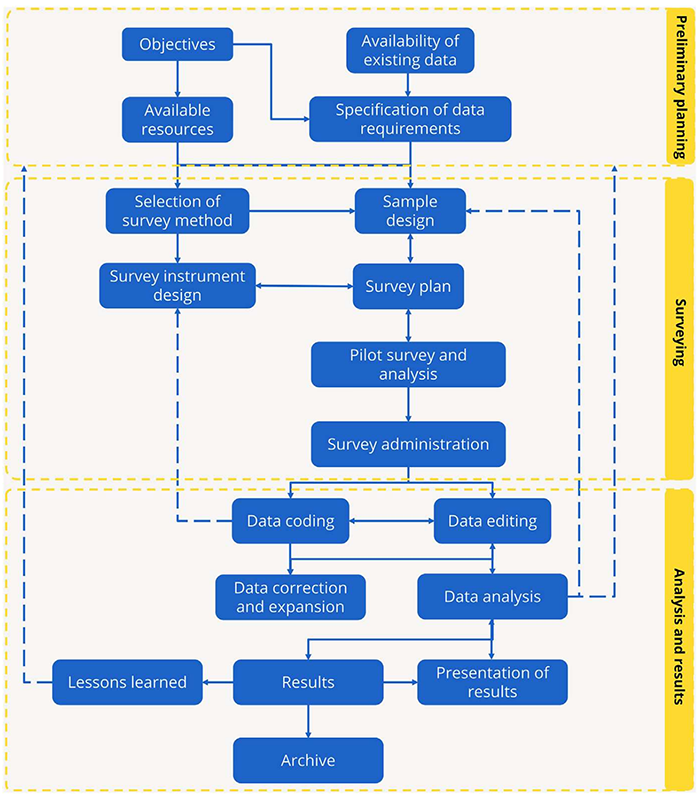


Travel surveys and interviews are considered to be a traditional and rather straightforward way to collect data on the travel behavior of the population of interest. Usually, they are conducted over a dedicated sample or, more rarely, during the census when the whole population is being surveyed / interviewed. The results can be obtained at the level of households or individuals. Initially, travel surveys and interviews were executed by means of pen and paper, whereas today phone surveys and interviews, even online ones, are more common.
Travel surveys, and interviews data collection processes (Figure 4.3), typically take place in a systematic and cyclical manner. Most often this happens every, every two, or more commonly, five or even 10 years. Although the frequency varies across different regions, usually it has a uniform cyclical occurrence for a given region.
During these surveys and interviews, respondents are asked to record or state their travel behavior on an average weekday. The collected data typically include the following socio-economic and demographic context data:
· Household details:
——Household size,
——Dwelling type and ownership,
——Number of registered motor vehicles by type,
——Number of bicycles.
·Personal data about individuals in the household:
——Age and gender,
——Relationship to head of household,
——Employment status,
——Occupation,
——Industry of employment,
——Personal income,
——Education degree level,
·Travel details,
——Data for all travels made on the given day,
——Location of trip origin,
——Time of travel, including departure time and arrival time,
——Purpose of the travel,
——Location of the destination,
——Mode of transport used,
——For the trips made by vehicle:
Vehicle used,
Number of occupants,
Roads used,
Parking location used,
Parking or toll-related details (amount paid and by who)
——For trips made by public transport:
Type of ticket,
Type of zone ticket,
Type of fare paid,
Reason for not traveling on the given day.
In practice, travel surveys and interviews are commonly also complemented with other mobility-related details that are collected to capture the overall context of the noted mobility behavior. These include, among others, land use data, existing infrastructure and services overview, traffic and person count, as well as surveys on attitudes and elasticity of transport demand (e.g., stated preferences) for the same moment in time and geographic area of interest. Furthermore, when speaking of the geographical area of interest, this does not solely relate to the residents of the considered area, but also to non-residents who travel in or across the area. Their mobility behavior is also collected via shorter travel surveys and interviews conducted at specific locations, usually at the border of the geographical area of interest. These types of surveys and interviews are commonly called intercept surveys and interviews.

Source:https://www.sciencedirect.com/science/article/abs/pii/B9780128207178000051?via%3Dihub
Edited by Cheng Tian